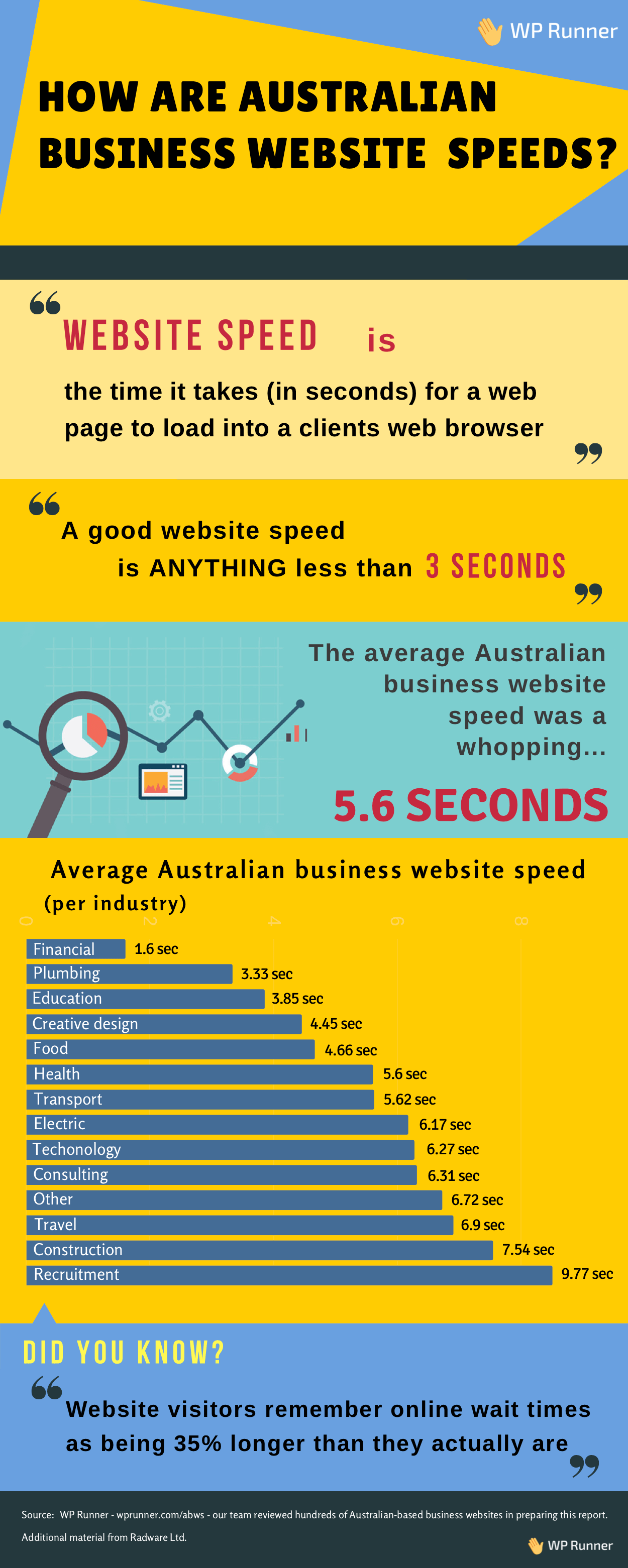WordPress is still the content management system to beat. It has continued to grow and now powers around 30% of all websites globally.
We set out to look at the impact of massive WordPress adoption on your average Australian business owner.
The effect of website speed has been studied and cited widely and many conclude that a 1 second increase in website speed can cause almost 10% of visitors to abandon their quest to reach you.
In our experience we find that most small businesses should have a website load time of less than 4 seconds in order to capture the most interest for their business.
How do Australian small businesses perform according to the data?
We reviewed hundreds of Australian business websites and came back with some amazing results broken down by industry.
For starters the average speed of an Australian small business website across all industries is a whopping 5.6 seconds!
Unfortunately that sort of speed is not a great speed for any business that is trying to succeed in growing a business online.
On the whole this is a big problem (and frankly its a problem that can be fixed with a little bit of TLC from a developer). Anything below 3-4 seconds is absolutely driving people away from your website. And ideally you really should aim to hit between a 2-3 second load time for the best results.
Fast website loading speeds build trust and confidence but most of all people just don’t want to wait. We live in a world of instant access to everything and if a website doesn’t open fast customers will just click on the next site. It’s as simple as that!
The whole issue of website speed is something we care about a lot and even wrote a step by step guide about.
How do different industries perform?
Next we broke down these results by industry below (hint finance businesses are the best and recruitment businesses performed the worst):
Embed this infographic on your website or blog:
Overall Australian small businesses have a way to go with improving their website performance. We’ll definitely be interested to see how these statistics change over the course of the next 12 months.




